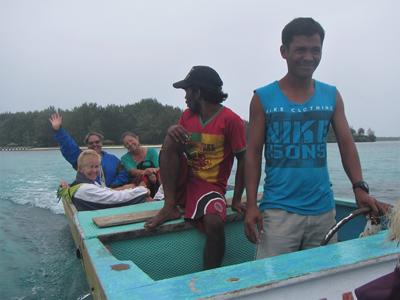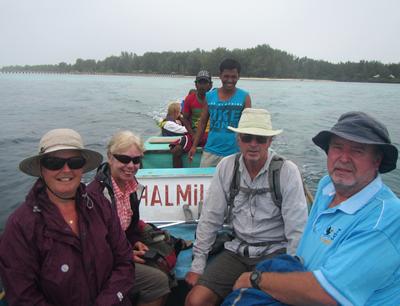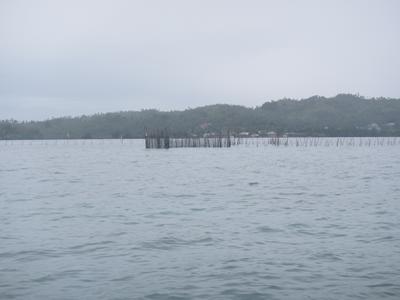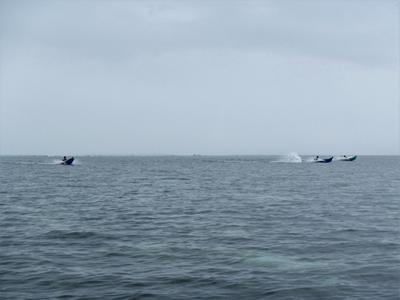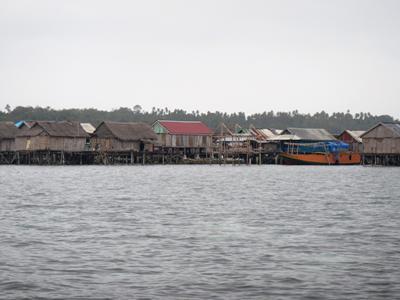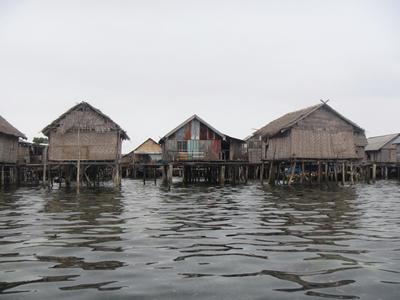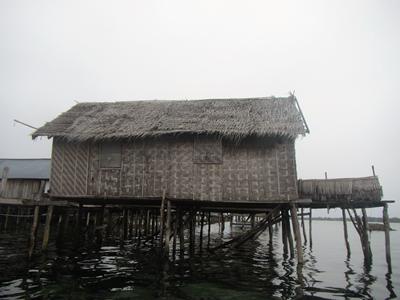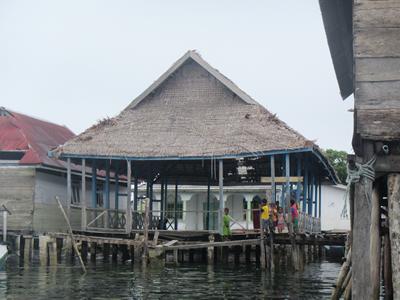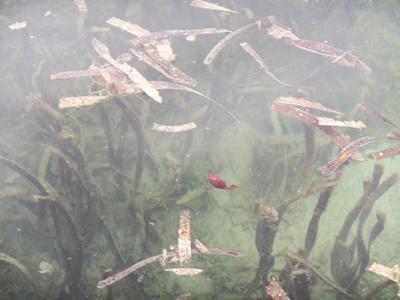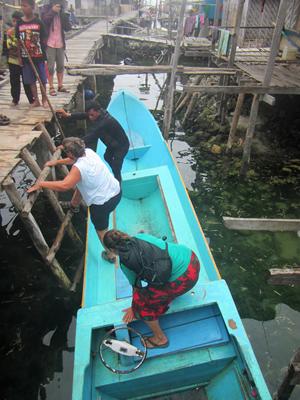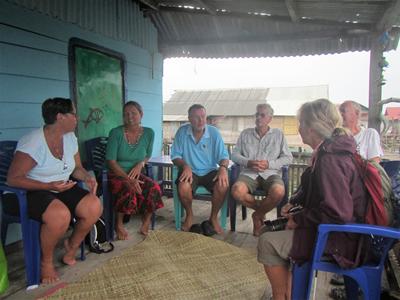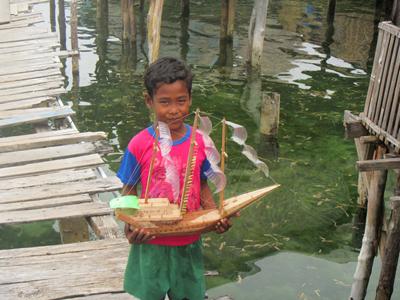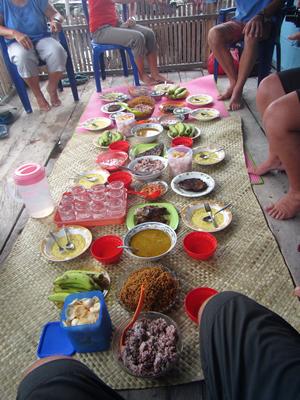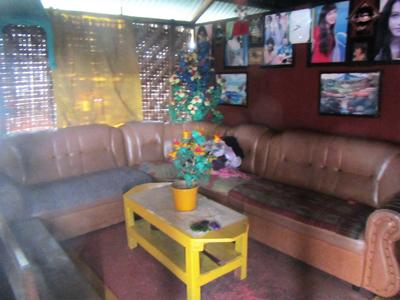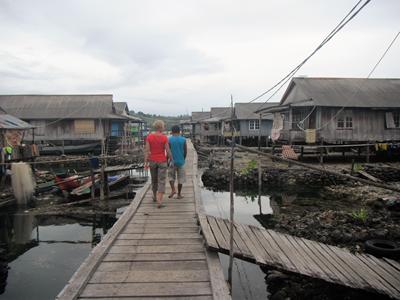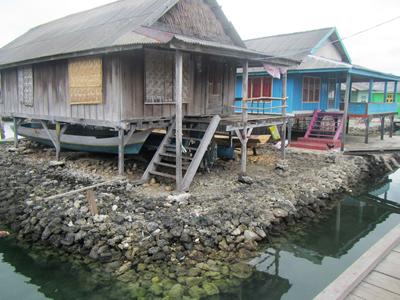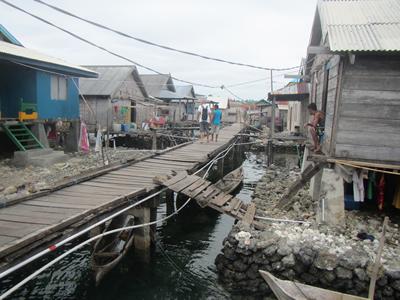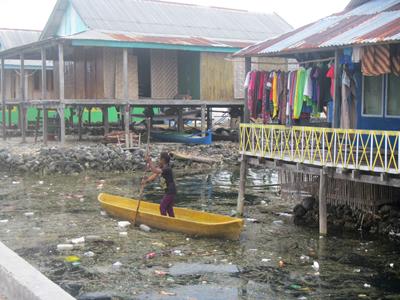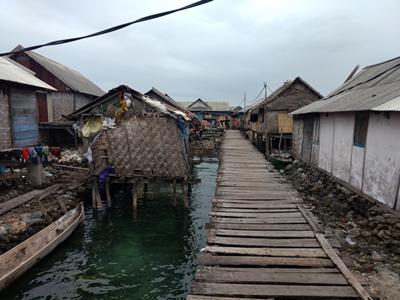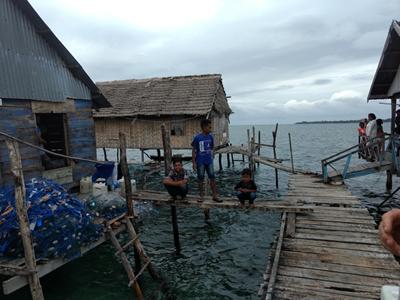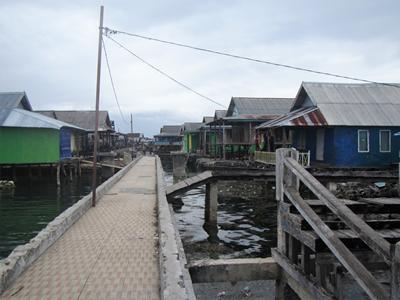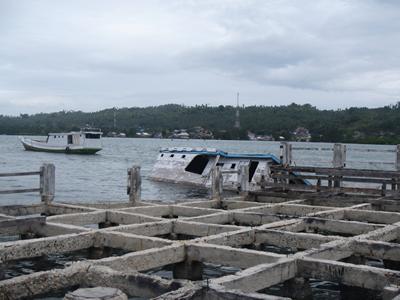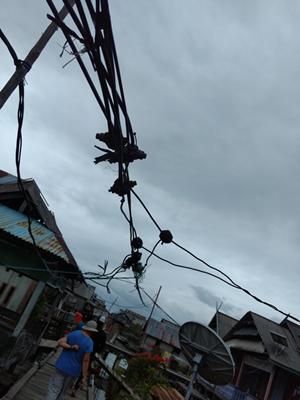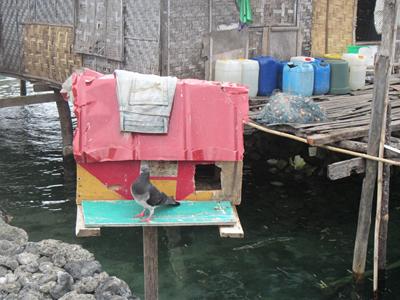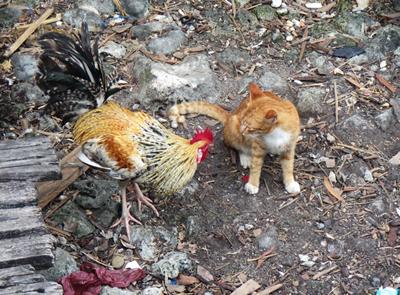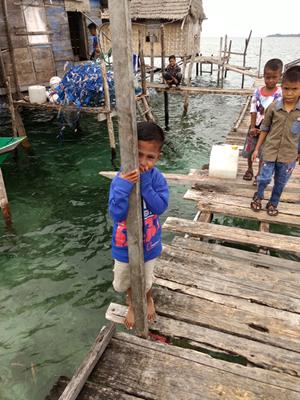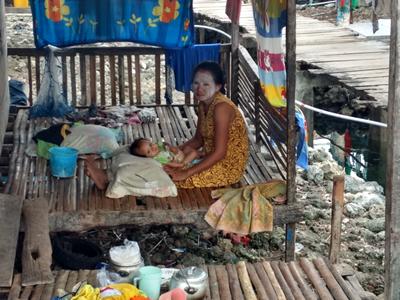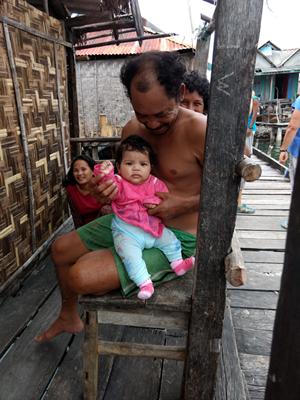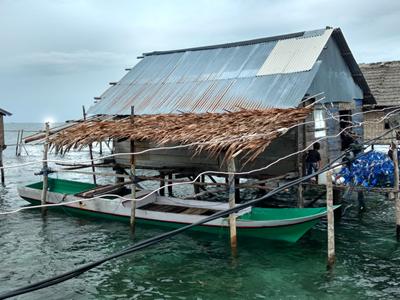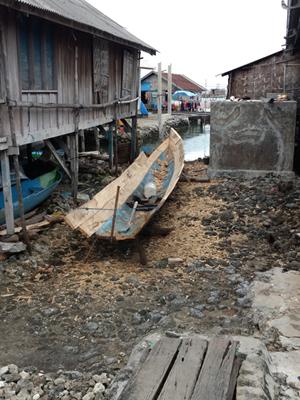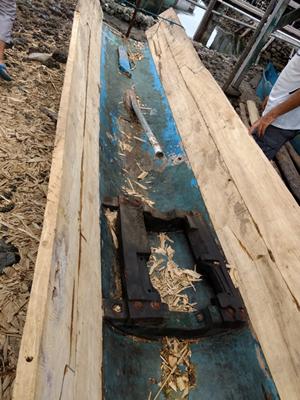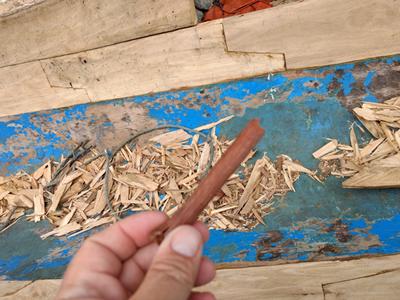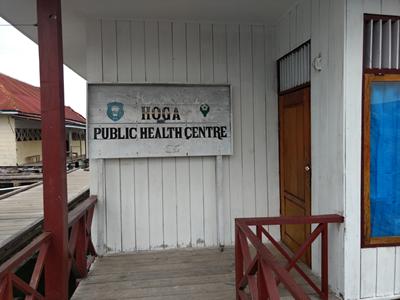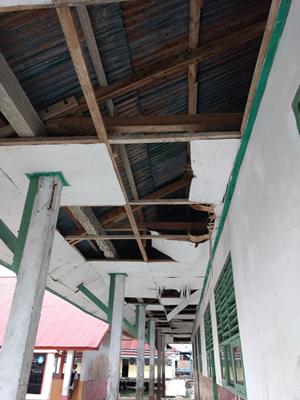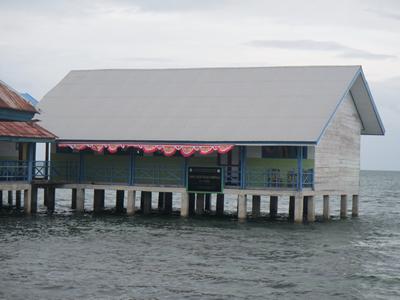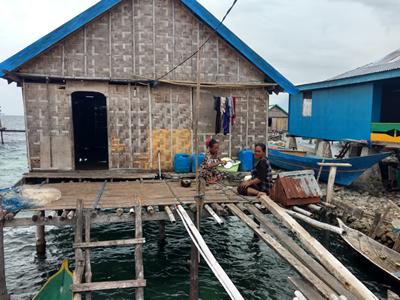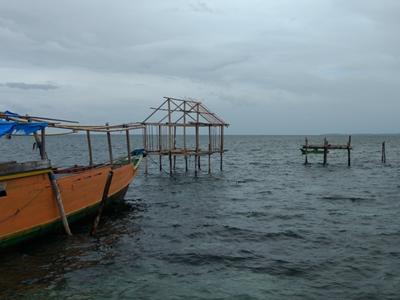Bajo Sampela - village on stilts

|
Sunday 13th August 2017 Some young men from the Bajo village came over in their boat
to invite a group of us to visit their village. It is totally disconnected
from land, and obviously can only be accessed by boat. They would pick us up
from the beach, take us across the lagoon, provide us with lunch, and take us
for a walk around their village. All at a price of 250,000 rupiah (£15) each,
which was actually rather expensive given that a meal is less than 50,000, but
we reasoned that it didn’t make a huge hole in our budget, and the income
would improve their quality of life, so we were happy to go. It would be our
first experience of what they call a “sea gypsy” village –
people who live on and from the sea. Judging by the offerings from the
fishermen who call by the boat, with their tiny fish and undersized lobster,
the living from the sea is not great. They arrived promptly at the beach, nine of us piled into
their sturdily-built boat and off we went across the lagoon. The boat’s
high prow cut straight through the waves, though a fair amount of it joined us
in the boat. The sensible ones had taken seats at the back.
Margret(Unwind), Nikki (Stars End II) and
Anita (Xamala) snug and dry aft. Smiles as we leave Hoga Island behind
in grey skies.
On the way over, we passed FAD’s. And
local boats racing each other passed us.
Approaching the village. These houses seem to be
constructed of wood, on wooden stilts, with walls of woven sea grass.
A traditionally built house as we turn into the village. The
first hint that more modern building materials are also used.
The water here was about a metre deep. We
climbed out of the boat up a make-shift ladder.
We were seated on the neighbour’s verandah for
lunch. This young man proudly showed us his boat
with water bottle sails.
A wonderful spread for lunch. Inside
our host’s living room. Atypical, we later saw.
After lunch we were shown around. Most houses sat on
stilts over the water. Some were built on ‘islands’ of coral.
Electricity cables strung above, and water pipes
alongside the walkway. Floating rubbish seemed to collect in certain places. Electricity is available for 5 hours a day, during the
evening, at a cost of 4,000 rupiah, around 25 pence, per day, payable daily.
You go and pay, they switch you on.
Some houses needed some work on them. Grass walls last a
year. Many of the walkways had huge gaps or were not fixed.
This concrete pathway leads to the town jetty. Looking
across the town jetty to the island of Kaledupa beyond.
Power cables. Pigeon
post?!
Who are you looking at? He’s
probably wondering the same...
Ladies cover their faces with rice powder to protect
their skin. Family time.
Boats are a necessity here. This one has a boat port. A
rebuild under way.
The planks are held together with dowels made from
mangrove wood, and epoxy.
The Health Centre is open one day a week. This
school building is 5 years old. Not repairing it, built a new one.
New school building. Recently-built
house. Part of the wooden walkway was being replaced and we asked
our guide about where the wood came from as the village has no trees.
Apparently “the Government” provides it for them. Clearly they
need to provide more, as it was quite treacherously dangerous in places. He
showed us a scar on his leg from childhood – “Used to be
bamboo,” he said.
A childhood scar from falling on/off the walkway. A
new house under construction or an outhouse? After our tour of the island, we waited a while for the boat
to be brought back – presumably it is jointly owned – and then were
taken back to the beach at Hoga. The ride back in the afternoon wind waves was
wetter than the ride over, but it had been a very interesting trip and we
thanked our young hosts enthusiastically as they set off home. It certainly
gave pause for thought, once again, at how some communities of people live
their lives quite simply and yet quite contentedly. We wondered, as we often
do, whether we could be as content with so little. |
